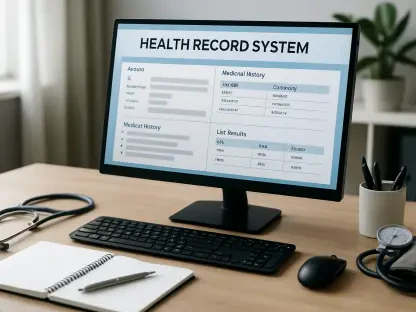Navigating the Medicare Payment Crisis in Diagnostic Labs
In the complex landscape of U.S. healthcare, a staggering threat looms over diagnostic laboratories as Medicare reimbursement cuts for nearly 800 tests, with reductions as steep as 15%, are set to impact the market, prompting urgent calls for action. This pressing issue has mobilized over 30 major healthcare organizations, including the American Medical Association and the American Hospital Association, to demand immediate congressional intervention. The purpose of this analysis is to dissect the market dynamics surrounding these cuts, evaluate their potential impact on the diagnostic testing sector, and explore legislative solutions like the Reforming and Enhancing Sustainable Updates to Laboratory Testing Services Act (RESULTS Act). This examination is critical for stakeholders aiming to understand how payment reductions could reshape access to vital diagnostics for Medicare beneficiaries.
The significance of diagnostic testing cannot be overstated, as it underpins early detection and management of conditions such as cancer and diabetes. With millions of Americans relying on these services, any disruption in lab operations due to financial strain could have far-reaching consequences. This analysis aims to provide clarity on current trends, data-driven projections, and strategic insights for navigating this crisis. By delving into the systemic flaws of the existing reimbursement framework, the market’s response, and potential reforms, this discussion sets the stage for informed decision-making in a high-stakes environment.
Deep Dive into Market Trends and Projections
Historical Context and Current Reimbursement Challenges
The diagnostic testing market has been grappling with instability since the implementation of the 2014 Protecting Access to Medicare Act (PAMA), which sought to align Medicare payments with market rates through reported private payer data. However, the methodology adopted by the Centers for Medicare & Medicaid Services (CMS) has been widely criticized for skewing rates downward, resulting in billions in reductions to the Clinical Laboratory Fee Schedule (CLFS). This persistent undervaluation has created a volatile market environment, where labs struggle to maintain profitability while delivering essential services to a growing Medicare population.
Over recent years, Congress has intervened with temporary delays to mitigate the harshest cuts, a pattern that highlights the unsustainable nature of the current system. Industry data suggests that without a permanent fix, the impending reductions could force smaller labs, especially in rural and underserved regions, to scale back operations or close entirely. Such outcomes would not only reduce competition but also limit patient access to critical diagnostics, creating a ripple effect across the broader healthcare market.
Projected Impacts on Access and Innovation
Looking ahead, market projections paint a concerning picture if the proposed cuts take effect. Analysts warn that a 15% reduction in reimbursement for widely used tests could lead to a contraction in service availability, particularly affecting vulnerable populations who depend on Medicare for routine screenings. This financial pressure might deter labs from investing in innovative technologies, such as advanced genetic testing or personalized diagnostics, which are increasingly in demand as healthcare shifts toward precision medicine.
Furthermore, the potential consolidation of the lab market looms large, as smaller players may be unable to absorb the revenue losses. Larger labs could dominate, potentially driving up costs in the long term due to reduced competition. Market forecasts indicate that without legislative intervention, the diagnostic sector could see a 10-15% reduction in testing capacity over the next two years from 2025 onward, exacerbating delays in diagnosis and treatment for chronic and acute conditions.
Legislative Solutions and Market Stabilization
Amid these challenges, the RESULTS Act emerges as a pivotal legislative proposal with bipartisan backing, aiming to reform the CLFS rate-setting process. By leveraging an independent commercial claims database for widely available tests and allowing direct data reporting for specialized diagnostics, the act seeks to establish fairer, market-reflective rates. Additionally, extending the rate-setting cycle to every four years and capping annual reductions could provide labs with the financial predictability needed to plan and innovate.
Market analysts view this reform as a potential game-changer, projecting that a stabilized reimbursement framework could encourage investment in cutting-edge testing technologies. However, political gridlock and competing national priorities pose risks to timely implementation. If passed, the legislation could serve as a blueprint for other Medicare payment systems, fostering a more resilient diagnostic market capable of meeting evolving healthcare demands.
Strategic Reflections and Market Recommendations
Reflecting on this analysis, it becomes evident that the diagnostic testing market has reached a critical juncture where systemic reimbursement flaws under PAMA threaten both access and innovation. The data and trends examined underscore a clear consensus among stakeholders that temporary fixes have only delayed an inevitable crisis, with profound implications for Medicare beneficiaries and lab operators alike. The potential for market consolidation and reduced service capacity highlights the urgency of addressing these challenges head-on.
Moving forward, strategic recommendations for industry players include active advocacy for the RESULTS Act to ensure sustainable payment structures. Healthcare organizations and labs are encouraged to collaborate with policymakers to expedite legislative action, while also exploring operational efficiencies to weather potential cuts in the interim. For policymakers, prioritizing this issue despite political complexities is essential to safeguarding diagnostic infrastructure. Ultimately, the path taken in response to this crisis has the potential to redefine the resilience of the U.S. healthcare market, ensuring that diagnostic testing remains a cornerstone of patient care for years to come.









